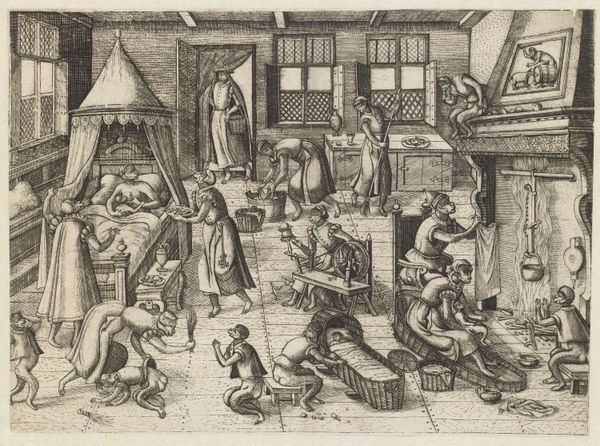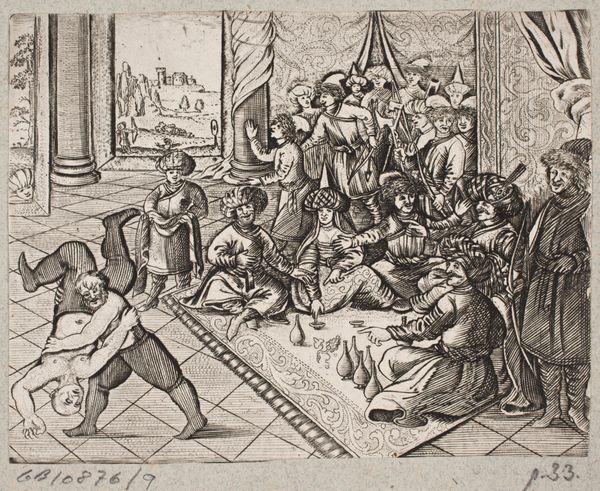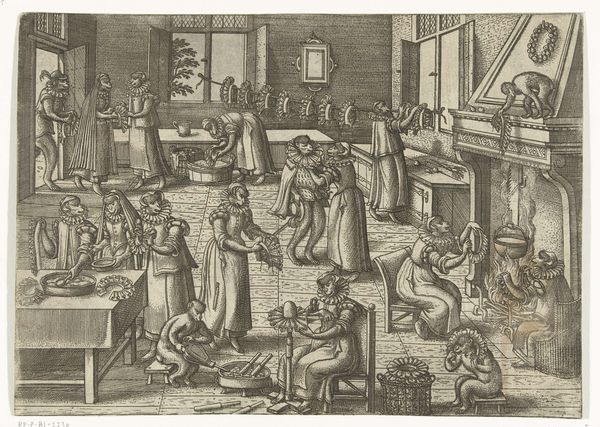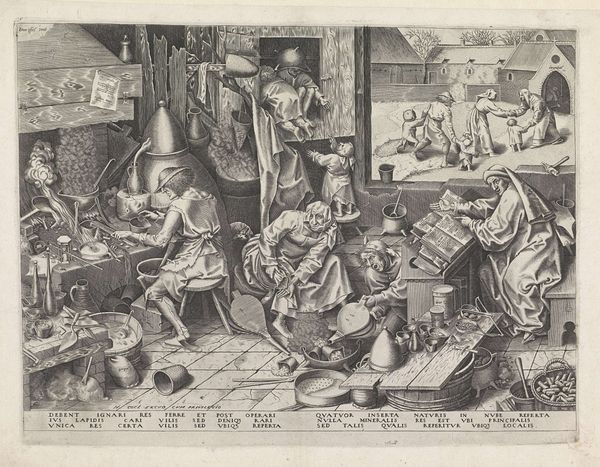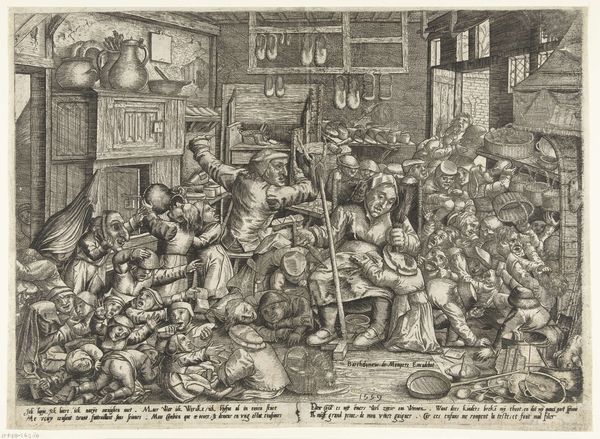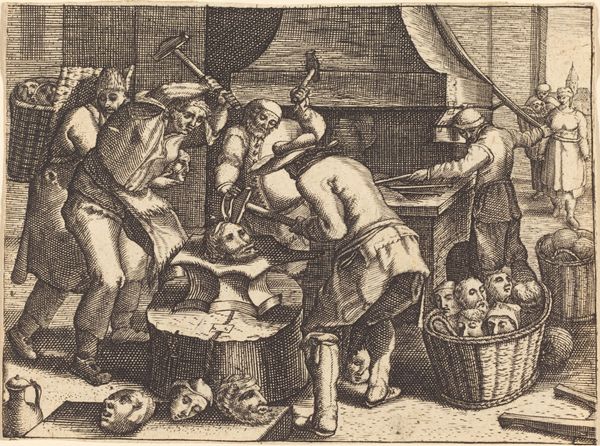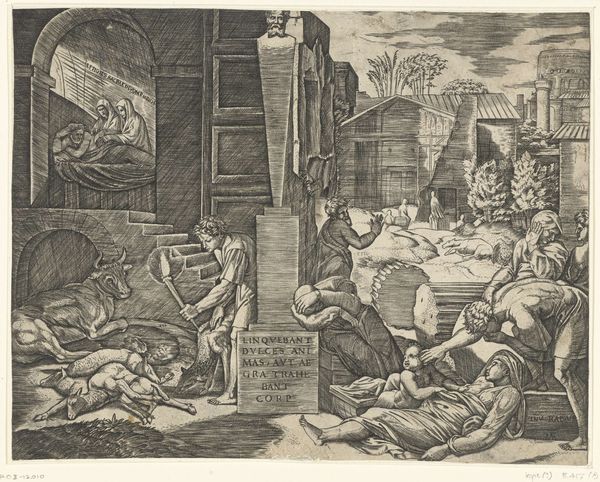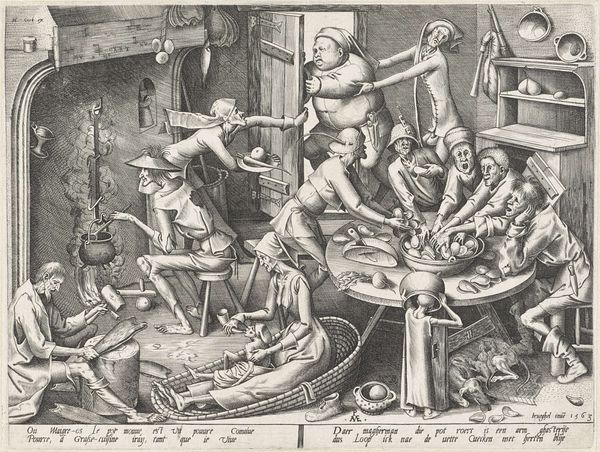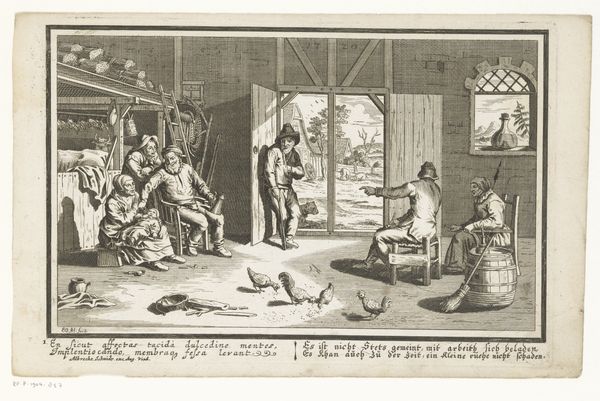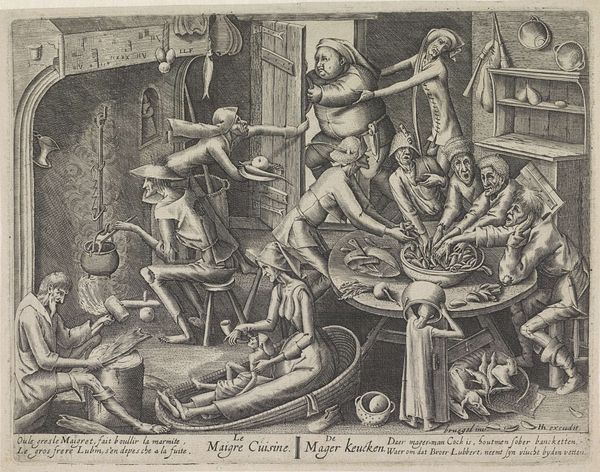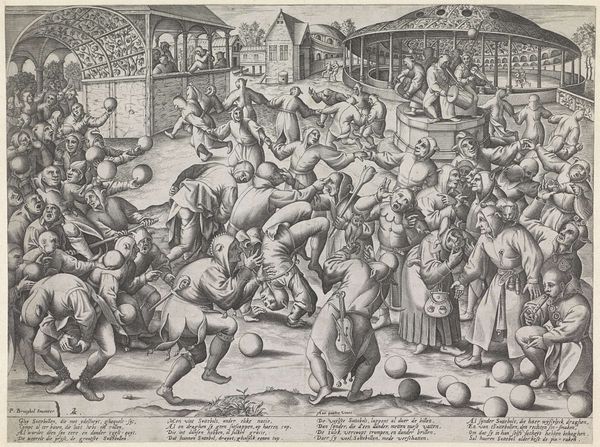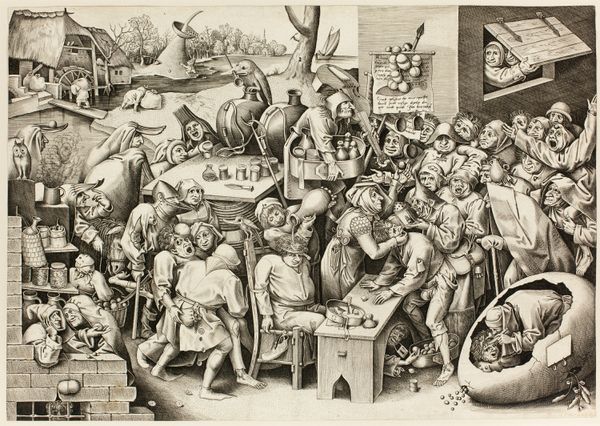
Skolestuen. Aber, der undervises og rises i en skolestue 1560 - 1660
0:00
0:00
print, intaglio, engraving
#
medieval
#
narrative-art
# print
#
intaglio
#
genre-painting
#
history-painting
#
northern-renaissance
#
engraving
Dimensions: 277 mm (height) x 227 mm (width) (bladmaal)
Curator: Welcome! Today we're observing an engraving, tentatively dated to between 1560 and 1660 and currently attributed to an anonymous artist, entitled "Skolestuen. Aber, der undervises og rises i en skolestue." Translated from Danish, this becomes “The Classroom. Apes being taught and punished in a classroom." Editor: Right off the bat, it's wonderfully chaotic. It's got this oddly dreamlike quality... very detailed, slightly unnerving. What IS going on with all those monkeys? Curator: Yes, the composition is striking, packed with figures, and meticulously rendered through the intaglio printmaking process. Given the probable timeframe, this puts it within the Northern Renaissance. We can delve into the labor it would take to create something so complex. And consider the paper itself – what materials were available then? Where did they come from? Editor: All good points. The act of producing this involved skill and also physical labor. All that repetitive movement leaves its traces somehow... As for me, I'm just trying to wrap my head around what the overall point might be. The artist has crammed every inch of space with some detail or other. There are apes learning, apes being disciplined… Is it a moral commentary? Curator: Quite possibly. Animal symbolism was incredibly popular and the subject matter points to the well-established genre scenes which explored various human behaviors through this particular type of animal allegory. Editor: Ah, it's a critique. Okay, I'm on board. There’s something almost Breughelian about the busy-ness of it. Are we meant to see ourselves in these apes or are we observing an absurd pantomime of society? That harsh classroom feels very…real. It also raises thoughts of art and skill itself as a kind of learned 'behavior' for an artist to adopt. Curator: Exactly, thinking about skill, material access, even basic economic activity…it creates another framework. Without knowing definitively who the artist was, we're left with examining the socio-historical factors influencing this visual essay. And to your other point, the way in which these prints were circulated also meant accessibility, a sort of proto-mass media, allowing such ideas to percolate more widely through society. Editor: I agree. This piece sparks so many ways of considering value; whose stories matter and the various methods employed for shaping perspectives over time. Well, whatever the intent, I will not forget those cheeky monkeys anytime soon! Curator: Precisely. It leaves an imprint, which, after all, is the function of a print! Thanks for taking this journey with me.
Comments
No comments
Be the first to comment and join the conversation on the ultimate creative platform.
